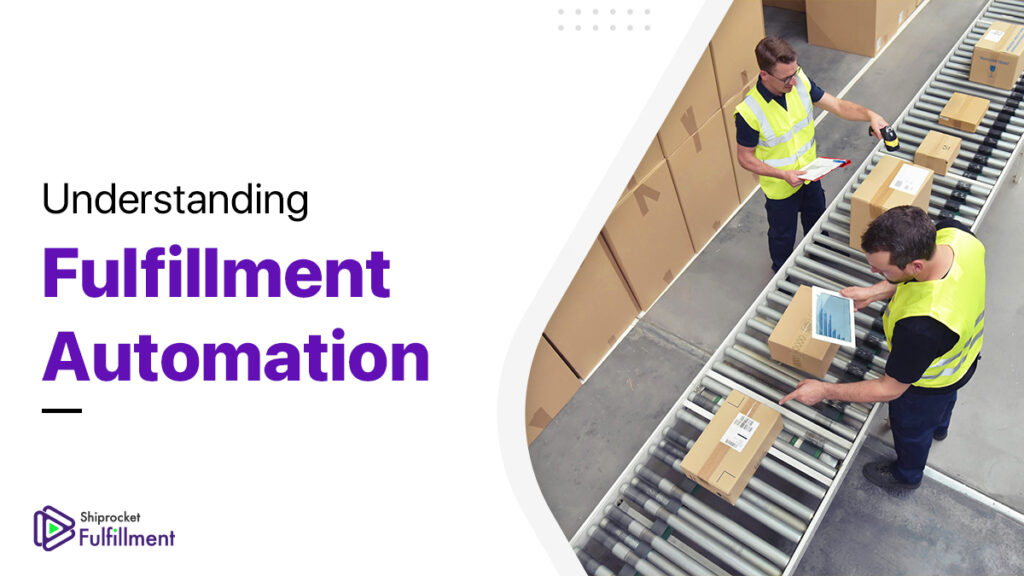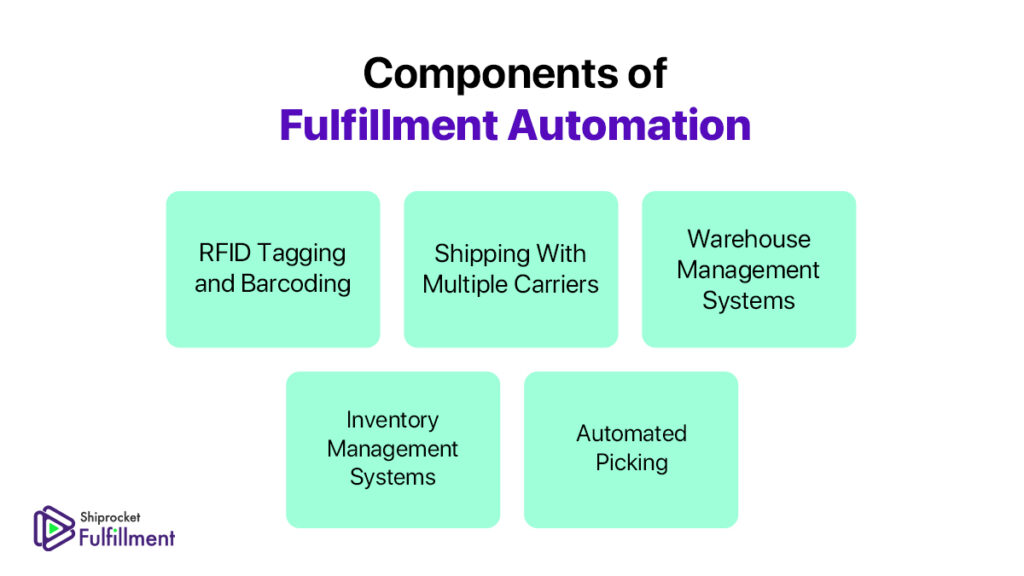Order fulfillment is one of the most integral aspects of your eCommerce supply chain. However, it can be one of the most redundant processes that need to be repeated over and over again with utmost accuracy. If your order fulfillment operations are not in order, you can face several consequences like delayed order delivery, low order accuracy, unhappy customers, unpleasant experiences, etc. With time, order fulfillment technologies have also evolved and you can automate most operations to ensure maximum output. Fulfillment automation can be a great advantage for your business if you want to reduce time and deliver orders faster.

Let’s have a look at what fulfillment automation is, and if your business really needs in-house fulfillment automation to succeed.
What is Fulfillment Automation?
Fulfillment automation refers to the process of automating fulfillment operations to increase yield and reduce the order to shape time along with increasing order accuracy and reducing shipping time.
Types of eCommerce Fulfillment
In-House Fulfillment
The first type of eCommerce fulfillment is in-house fulfillment. This includes carrying out all fulfillment operations like inventory management, warehouse management, picking, packaging, shipping, and return management all by yourself. this means that you coordinate with all stakeholders yourself, arrange for logistics, and invest in capital to carry out all operations.
3PL Fulfillment
The next type of eCommerce fulfillment is 3PL fulfillment. This includes outsourcing your operations to a third-party fulfillment provider that will take care of all operations for you. All operations like inventory management, warehouse management, shipping, returns, etc. will be taken care of by the fulfillment company. All you need to do is send your inventory to their fulfillment centers.
Components of Fulfillment Automation

Now that we know the types of eCommerce fulfillment and what fulfillment automation is, it is important to know what is included in fulfillment automation.
Warehouse Management Systems
The first and foremost component of fulfillment automation is the utilization of warehouse management systems. These systems enable you to keep a track of the different products in your warehouse, where they are stored, and devise the most appropriate floor plan for storing them. This synchronizes with your order management and inventory management system to ensure the best results and share data and real-time with supply chain stakeholders.
Inventory Management Systems
The next component of fulfillment automation is inventory management systems. These systems ensure that your inventory is sorted at all times and you have a complete view of the inventory stored in different warehouses. It synchronizes with your order management system to update in real-time the remaining stock and let you know when to reorder inventory. Inventory management systems help you reduce discrepancies, keep an eye on inventory position, and track inventory regularly.
RFID Tagging and Barcoding
Fulfillment automation includes RFID tagging and barcoding of racks, bins, and SKUs to ensure that the products are recorded correctly and executives face no problem when processing orders. This helps reduce errors and helps you look at inventory much faster in the warehouse.
Automated Picking
Automated picking machines are utilized throughout the fulfillment automation to ensure that the time taken to process orders is shorter and you can integrate it with an existing warehouse management system to see where an item needs to be picked from.
Shipping With Multiple Carriers
Another aspect of fulfillment automation is connecting with multiple carriers to find out the best shipping rate for your order and delivering it accordingly.
Does Your Business Need In-House Fulfillment Automation?
Even though fulfillment automation is a lucrative and technologically advanced means for fulfilling orders, it is expensive. Installing the systems in-house can cost you a lot of money and you will need to loan capital or bootstrap it to get started. Also, there is no guarantee that you will be able to recover the money very soon. So what are the questions you must ask yourself before investing in in-house fulfillment on automation?
- Do my current sales show a real trend or are they seasonal?
- Am I having challenges in hiring and retaining skilled labor?
- How much time will it take to see the returns on my investment?
- What are the costs involved in fulfillment automation?
- Do I need to automate my complete supply chain or only a part of it?
If you believe you have answers to all these questions, you can decide whether you need in-house fulfillment automation or not.
If you don’t need in-house fulfillment automation just yet, does that mean that you need to give up the idea of automating completely? We don’t think so.

How to Achieve Fulfillment Automation Without Capital Investment?
If you don’t want to invest huge capital to automate your fulfillment operations, you can still do it by outsourcing operations to 3PL fulfillment providers like Shiprocket Fulfillment.
Shiprocket Fulfillment has multiple fulfillment centers located across different regions in the country. Our fulfillment centers are equipped with the latest warehouse management system, inventory management systems, handheld picking devices, falcon weighing machines, and more to help with fulfillment automation.
All you need to do is send your inventory to our fulfillment centers and we will process all incoming orders for you. This will help you decrease the order to ship time, reduce shipping costs, offer same-day and next-day delivery to your customers, reduce weight discrepancies, and decrease RTO by 60%.
Final Thoughts
Fulfillment automation can be a welcome next step in your business provided you don’t have to spend a huge amount on it. Tying up with a 3PL fulfillment provider like Shiprocket Fulfillment can be the right thing to do for fulfillment automation. Many need to see eCommerce businesses taking this route to lessen their load and improve fulfillment operations.






